
Radisson Hotel Newport Beach
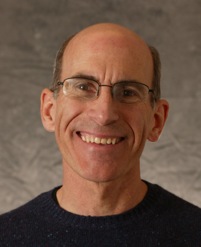 Paul Butterworth
Paul Butterworth 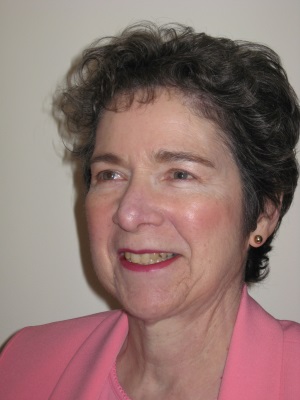 Marsha Drapkin Hopwood
Marsha Drapkin Hopwood Marsha left UCI for the RAND Corporation in Santa Monica, California, primarily working in the Health Program on a variety of projects, under contract to the National Institutes of Health (NIH), relating to clinical research and clinical trials. While most of the projects were the cross-discipline analytical studies that are typically done at RAND, one unusual project developed and evaluated a prototype computer system to support small scale clinical research. After the RAND team successfully tested in three Clinical Research Centers (CRCs), NIH put this system out to bid for production of a commercial version for all the CRCs it funds. As was common among people who had worked at RAND, Marsha and a few colleagues exercised their entrepreneurial muscles and started their own computing business. It had a brief, but profitable, life.
Before coming to UCI, Marsha became a student member of the Association for Computing Machinery (ACM), and later was President of the UCI Student Chapter. While at RAND, Marsha became more involved with ACM and served as Southern California Regional Representative and Chairman of the Publications Board. Her involvement in ACM exposed her to many of the pioneers and the seminal ideas in computing.
Marsha left RAND for TRW (now Northrop Grumman), where she worked on strategic planning and project management, and also served as CIO for one of the divisions at Space Park in Redondo Beach, California. TRW produced leading-edge satellites, space telescopes, and other products for government agencies, but lacked a strong computing infrastructure to support this work. This was a time of rapid change in the computer arena, and Marsha and her team were responsible for introducing personal computers and personal computer standards to Space Park, selecting and implementing a common e-mail system, and developing standards for connectivity among a disparate collections of computing tools. She was integral to the team involved in solving date-related problems with TRW's vendors prior to, during, and after the year 2000. She also worked on corporate-wide standards and contracts for telephony and long distance services, computing hardware, and software. While at TRW, Marsha took up ballroom, swing, and country western dancing, a hobby she still pursues.
After retiring from a career that provided financial benefits, Marsha completed the Applied Music Program, specializing in percussion, at El Camino Community College, and now plays percussion instruments in the El Camino College Community Band and in a percussion ensemble. She is an active volunteer at the South Coast Botanic Garden, Palos Verdes Peninsula, California, where she leads efforts to maintain the Ida Drapkin Fuchsia Garden (named after her late mother), serves as President of the South Coast Fuchsia Society, and puts on a 2-day plant show and sale every year. At UCI, Marsha serves on the Diversity Committee for ICS and Engineering.
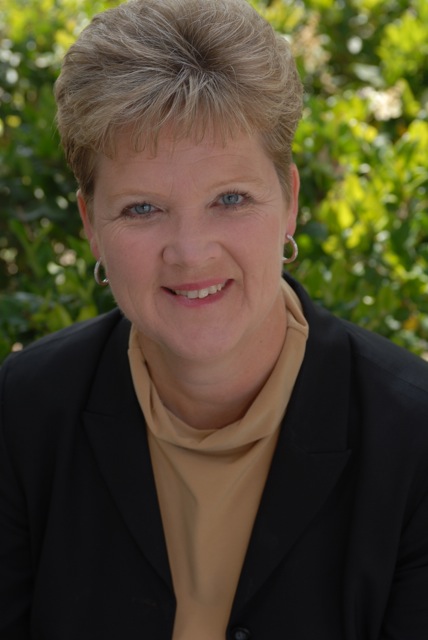 Karen Evensen
Karen Evensen Prior to joining Astronics, Karen worked for Sony Trans Com Inc. for five years where she served as the Manager, Software Engineering. She also worked at Hughes-Avicom International for 13 years, where she served in various positions such as Deputy Director of Product Engineering and Director of Systems Engineering.
Karen received her Bachelor of Science in Information and Computer Science from University of California, Irvine and also received her Masters of Business Administration from California State, Fullerton. In addition to her education, Karen was honored as one of "Fifty Women of Distinction" by California State University, Fullerton in 2007 and was also named Outstanding Women in Technology for 2007. She holds three patents related to digital audio and video distribution systems.
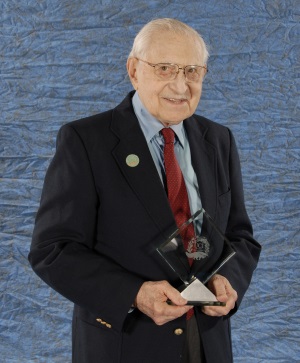 David Feign
David Feign David left NACA to work for the Cornell Aero Lab in Buffalo, New York. He encountered the IBM 602 and 601 multipliers that were used for internal data reduction, and became addicted to computers. Dave and two others set up the first on-line, automatic wind tunnel data reduction system (David was in charge of the analysis software). This system gave engineers test results within an hour rather than having to wait overnight. He later helped the people at Caltech to set up their system, which was almost identical t the one at Cornell. He presented his work at several institutions, including Caltech and NYU.
From Cornell, he went on to work at the Autonetics Division of North American Aviation (now Boeing), where he was in charge of software development in the Computer Design Section. In this role, Dave programmed the FADAC computer – the first digital computer for the Field Artillery.
Dave also was part of the team that worked on the first Space Shuttle. At that time, IBM had contracted with Boeing to provide the computer component for the shuttle communications and stability. IBM was unable, however, to compress the code necessary for the shuttle to remain stable while reentering the atmosphere, preventing it from tumbling down and burning upon reentry. David had developed a series of coding “tricks” for situations in which the code necessary to run certain operations might be too large for the space available. He worked with the IBM programmers to show them how to write the code in assembly language and achieve what they needed, and the rest is history.
In 1964, Dave was awarded a fellowship to pursue a Ph.D. He chose UCI because the university was using computers in education. He also helped the fledging Department of Information and Computer Science to design the computer center. Dave developed and implemented a requirement to accept passwords at individual computer terminals and send back asterisks instead of the actual characters entered.
In the 70s, David Feign was recognized by the Association of Computing Machinery (ACM) as an ACM Pioneer in the early days of computing. He is listed in three Who's Who, including Who's Who in the Computer Industry. He was also cited in the Computer Oral History Collection available in the Archives Center of the National Museum of American History.
 Roy Fielding
Roy Fielding 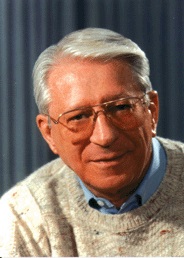 Patrick Hanratty
Patrick Hanratty Hanratty earned a PhD from the University of California, Irvine. He worked for General Electric, where in 1957 he wrote Pronto, an early commercial numerical control programming language. Then he moved in 1961 to General Motors Research Laboratories where he helped to develop DAC, (Design Automated by Computer).
1970 he founded the company, "ICS" that produced a CAD/CAM drafting system. In 1971, building on lessons from ICS, Hanratty founded the extremely successful Manufacturing and Consulting Services (MCS. All the software was written in Fortran and it ran on almost any computer. His product was named Automated Drafting and Machining (ADAM), later AD-2000, and still later Anvil-4000.
Among well-known customers of MCS were Computervision who licensed Adam for CADDS, Gerber Scientific for IDS 3, and McDonnell Douglas who licensed it for Unigraphics. Several well-known CAD/CAM packages were developed from MCS products. Among them were Auto-Grapl, Autosnap 3D, Anvil-5000, and Intelligent Modeler.
Hanratty, currently a resident of Prescott Valley, Arizona, is married to Sandra, has two sons, a daughter and 13 grandchildren.
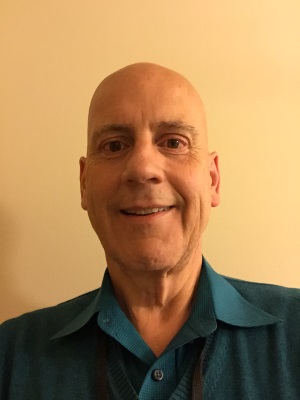 Pat Helland
Pat Helland Soon, Pat found part time work as an operator on the Dec PDP-10 and Xerox Sigma-7 within the ICS building. This allowed him access to unlimited programming time. He began life on a 36-40 hour day to maximize time programming and, occasionally, attend class. He took most of the computer science classes that he could but found little reason to take English, History, and other such nonsense.
In the Fall of 1975, Pat was 19 and met a waitress working graveyards at the Spires at the corner of Main and MacArthur. She was 23 and had 3 kids aged 5, 3, & 3. By December, there was a surprise on the way and Pat needed a job to feed an instant family. So, at age 20, he dropped out of UCI after 2-1/2 years and got a crappy job to pay the bills.
In 1978, Pat moved the family to Silicon Valley to get a programming job at BTI Computer Systems. He and a friend from UCI were chartered to build a database management system and proceeded to study what that was. We learned a lot from the literature and built major portions of a simple DBMS. They were especially interested in the papers written by Jim Gray of IBM and then of Tandem. Soon, the small company was getting smaller... That led Pat to realize he should work at Tandem with Jim Gray.
So, in July of 1982, Pat turned down an offer to join a 30 person company called Oracle and went to Tandem. There, he inherited major portions of a product called TMF (Transaction Monitoring Facility). TMF provided the database logging and recovery for the most successful fault tolerant system of its time. The NonStop System was a message based multiprocessor that provided extreme high availability and ran many stock exchanges, federal funds transfers, and other major enterprises. Pat rewrote TMF, evolving it in place, to turn it from the least reliable portion of the NonStop System to the most reliable. In addition, he built many major components of NonStop SQL, the first commercial shared nothing database system. Starting at Tandem, Pat benefitted in countless ways from the guidance of Jim Gray who introduced him to presenting, writing, and to the academic world.
Realizing that Tandem would not be succeeding as it had been, Pat moved to HaL Computer Systems which was largely owned by Fujitsu. When it became apparent the efforts into advanced transaction processing were stuck behind the efforts in hardware design, Pat moved quickly to drive the architecture and design of the 64-bit Memory Management Unit for the SPARC V9 system. It turns out you don't have to know anything about hardware if you can talk to people that do. You need to ask questions, drive agreement and write stuff down. Once the MMU was into detailed design, Pat set out to build a scalable CC-NUMA (Cache Coherent Non-Uniform Memory Architecture) multi-processor for SPARC V9. This was shipped by Fujitsu a few years later.
In 1994, Pat decided to move to Seattle to work for Microsoft building an enterprise platform. This was a bold move since Microsoft was really only focused on little tiny desktop PCs at the time. He led the architecture for the first N-tier transactional system. The products were called Microsoft Transaction Server and Distributed Transaction Coordinator. Soon after, Pat decided N-tier transactional systems were brittle and he started advocating programming models that would soon be known as service oriented architectures.
Starting in 2000, Pat drove the architecture and design of a high-performance, exactly-once, transactional messaging system called SQL Service Broker. This system, built deeply into SQL Server, delivered as much as 180,000 transactionally correct messages per second. He was asked to work on the WinFS project, combining database and filesystems, which was a mess. That stunk. Soon, he moved on to an 18 month stint of Architecture Evangelism (i.e. telling stories to customers). After this, he quit and went to Amazon.
After being widowed in 2004, Pat decided to move to Amazon in 2005. That year, he met and married his wife, Lisa. At Amazon, Pat worked on distributed systems and service oriented architecture. He helped with the initial design of the Dynamo storage system and worked on the Product Catalog team, a massively complex data transformation and collation system. After all attempts to publish academic papers were consistently denied, he waited for his first vest and quit, walking from a ton of money.
Returning to Microsoft in 2007, Pat worked to edit the SIGMOD record describing the lifetime achievements of his mentor, Jim Gray, who had recently gone missing at sea. Soon, he was working on enhancing COSMOS, the massively scalable big data analysis engine behind Bing. His first project added database technology to the data representation and processing in COSMOS with indexing and data affinitization within the cluster. These techniques reduced to computational needs of a 50,000 server system by 50%. The second project provided event driven distributed atomic transactions over petabytes of data. This was designed to support over 1 million atomic transactions per second to support crawling the web.
In 2012, Pat started at Salesforce where he has been working on novel database, storage, and datacenter architectures.
Pat holds 31 US patents and has authored or coauthored over 20 papers. He was recently asked to write a regular column for ACM Queue. Pat has chaired numerous conferences including being the permanent co-chair for HPTS, the High Performance Transaction Systems workshop.
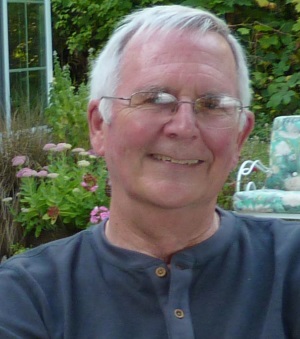 Greg Hopwood
Greg Hopwood In 1968, ICS became an independent department. Greg returned to UCI as one of the first students in its new PhD program. He worked through the entire curriculum and taught almost every ICS undergraduate course. Greg also enjoyed working for several years on the Distributed Computing System (DCS) -- the first-of-its-kind distributed processing token ring system (NSF GJ-1045: Farber and Feldman). Greg wrote his dissertation while working full-time at a local computer company. He received his degree in 1978. Julian Feldman, Fred Tonge, and Alfred Bork were his dissertation committee.
Greg has worked in the computer industry as a software programmer, system architect, program manager, and webmaster as well as an executive in marketing and international operations for various companies offering integrated circuits, mini-computers, super-minicomputers, business and scientific workstations, graphics supercomputers, and personal computers. In 2004, he co-founded a cloud-based software company with his brother and served as Chief Technology Officer until closing the company in 2015. Greg is now retired from the daily grind and enjoying some time off.
Greg remains very grateful to UCI, ICS, and NSF for the support, encouragement, and opportunities that made possible his 50-year career in computing.
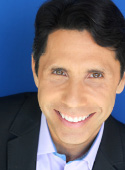 Tim Kashani
Tim Kashani On the more traditional Broadway stage, Tim and his wife Pamela produced the Tony Award® winning musicals Hair, Memphis, and An American in Paris. For 25 years and counting Tim’s IT development company, IT Mentors, spans the globe seeking to improve companies’ capabilities through insightful tech development and innovative teaching techniques. Tim holds a Bachelor of Sciences degree in Information and Computer Sciences, a Masters in Business Administration from the University of California at Irvine, and a M.F.A. Film Production with specialization in directing from Chapman University. In his youth, Tim compartmentalized his technical and artistic identities. Today, they are one.
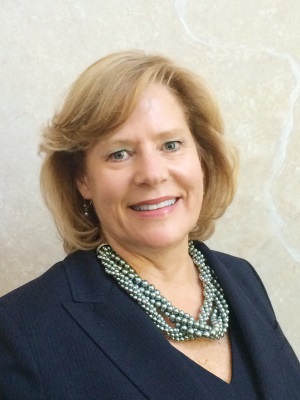 Barbara Branstetter Kew
Barbara Branstetter Kew Before returning to Indiana, she held positions based in Southern California. Kew has led international systems implementations in 22 countries for 3 global companies. At Hill-Rom, the IT team has been awarded the distinguished MIRA award for Excellence in Corporate IT from Indiana's TechPoint organization in 2009 and 2012 under Kew's leadership. In 2008, Kew was named winner of the Women & Hi Tech Leading Light Risk-Taker Award. In the community, Barb serves on the Indiana TechPoint Board, and has served on the Indiana University School of Informatics Dean's Advisory Council, and the 2006 Indiana Education Technology Council (Governor appointed). She is a United Way 30+ year contributor.
Barb earned a B.S. in Information & Computer Science from the University of California, Irvine in 1975, and an M.B.A. from Pepperdine University in 1986.
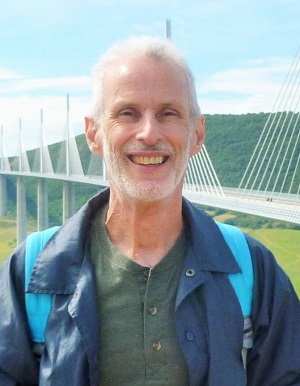 Richard Levine
Richard Levine Mr. Levine was a teacher of high school math with a degree from UCLA, but became excited about personal computing in 1977 when he purchased an Intel 8080 based computer (Sol-20) and taught himself to program a 4k assembly language chess game that played to a draw with his friend's Boris Electronic Chess Computer. He decided then to further his software skills by going back to school. While attending UC Irvine (BS Computer Science '81), he worked full time at Mattel Electronics. His initial game earned him a patent for his 1k program that ran Mattel Handheld Bowling (1979-1980). He soon became one of the first two in-house Mattel engineers to develop a game (PBA Bowling) for their Intellivision console.
In 1994, Mr. Levine – with two other engineers – ported the Digital Pictures Sega CD game "Double Switch" to Windows 95 with DirectX 1.0. Among a handful of games developed specifically for Windows 95, "Double Switch" was introduced at the Windows 95 launch party. He later worked at Microsoft on the Windows 98 and Windows 2000 teams, as well as in the Microsoft Games group.
Richard grew up enjoying the beaches of SoCal and the lights of Hollywood. That's why he enjoys the fact that "Palenque" featured a young Ben Affleck – now a movie star – as the narrator C.T., and "Double Switch" featured rock band Blondie lead singer Debbie Harry. He also got to work for a few months at Microsoft with "Tetris" creator Alexey Pajitnov. Today Mr. Levine lives on the beach in Florida, creating new game designs and writing science fiction. He's had over 40 short stories published and sells e-book anthologies of his written works. See http://www.rickslevine.com for more on Mr. Levine's career.
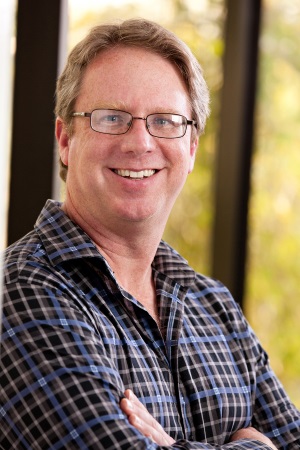 Owen O'Malley
Owen O'Malley 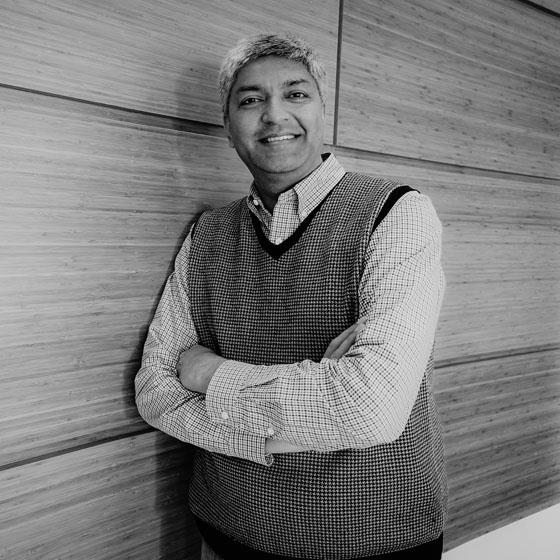 Dinesh Ramanathan
Dinesh Ramanathan  Jack Ringquist
Jack Ringquist Jack is currently the Americas and Global Sector Leader for Consumer Products and serves as Deloitte's Lead Client Service Partner and Lead Consulting Partner for Nestlé in the US. In his client service role, Jack is responsible for serving Nestlé in the US with quality and distinction across our businesses, providing leadership to our teams serving Nestlé around the world, and growing Deloitte's overall relationship with senior executives. Jack also serves many other global consumer brands including Bacardi, Cadbury, Clorox, Coca Cola FEMSA, Herbalife, and Mattel.
In addition to directly serving consumer product companies, Jack leads Deloitte's relationship with The Consumer Goods Forum (CGF). CGF is the global industry association for CEOs of manufacturers and retailers of consumer goods. Under Jack's leadership, Deloitte is the advisor to one of CGF's four strategic pillars, Health & Wellness, and is the only Firm on retainer with CGF. Jack is also the primary author of Deloitte's annual Global Powers of Consumer Products, a primary eminence platform for our industry practice and translated into multiple languages to be shared with clients and press throughout the world.
Jack joined Deloitte Consulting in 1994. He is a former Deloitte Regional Leader, a Global Consulting Industry Leader, and member of Partner/Principal peering and compensation committees. Jack has also contributed to industry and Consulting advisory committees focusing on market strategy, service offering development, and eminence.
Prior to Deloitte, Jack was a senior manager with Accenture specializing in business and technology transformation. Jack holds a Bachelor of Science in Information and Computer Science from the University of California. Jack resides in Los Angeles, California, with his wife and two children.
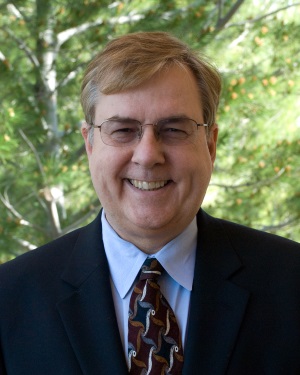 Lawrence A. Rowe
Lawrence A. Rowe After several years consulting and angel investing after retiring from Berkeley, Rowe accepted a position in 2007 as President/COO at FX Palo Alto Laboratory (FXPAL), which is a research lab modeled after Xerox PARC owned by Fuji Xerox. He later served as Chairman/CEO of the lab and left the company at the end of 2014. The FXPAL mission was to develop innovative technologies and product prototypes for the company.
Rowe published extensively and contributed to several important open source software systems (e.g., Berkeley MPEG-1 Tools, Postgres, Open Mash, Ingres, etc.). He received several “Best Paper” awards (ACM OOPSLA 1991, SIGMOD 1996, and Multimedia 1998). A paper co-authored with Dr. Michael Stonebraker titled “Design of POSTGRES” published in 1986 received the “1996 ACM SIGMOD Test of Time Award” for a paper that had the most impact over the decade after which it first appeared. More information is available at https://goo.gl/zv64M0 and http://rowehome.net/.
He founded several companies including the original Ingres Corporation, a relational DBMS startup co-founded in 1980 with Michael Stonebraker and Eugene Wong that went public in 1988. Beside consulting on business and product strategy, Rowe was a Board Member and VP Engineering at various times before the company was sold in 1990. For more info see “History of the Ingres Corporation,” IEEE Annals of the History of Computing, Vol 34, No4, Oct-Dec 2012.
Rowe is an active angel investor, a founding Board member for the corporate incubator Siemens Technology-to-Business (1999-2003), and served on the Board of Directors and Technical Advisory Boards for several high-tech companies including NCast, Inktomi and Dust Inc. He joined The Batchery, an Oakland-based global incubator for seed stage entrepreneurs, in early 2015 as an Investor/Advisor.
Professor Rowe is an ACM Fellow, past chair of the ACM Special Interest Group on Multimedia (1998-2003), and a co-founding editorial board member of the ACM Transactions on Multimedia Computing, Communications, and Applications. He served on numerous administrative and policy committees at U.C. and for agencies of the U.S. government and computer consortiums (e.g., NSF Computer Science Network Committee 1979-82, NRC Panel on Telecommunications 1993-4, and Internet2 Applications Committee 1997-2003). He was co-recipient of the 2002 U.C. Technology Leadership Council Award for IT Innovation for his development of the Berkeley Lecture Webcasting System. He received the 2007 U.C. Irvine Donald Bren School of Information and Computer Science Distinguished Alumni Award. And in 2009, he received the ACM SIG Multimedia Technical Achievement Award.
Finally, Larry and his wife Jean produce and sell award-winning premium wines using Napa Valley grapes under the Greyscale Wines brand (http://greyscalewines.com).
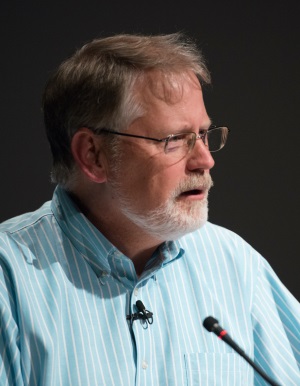 Daniel Russell
Daniel Russell 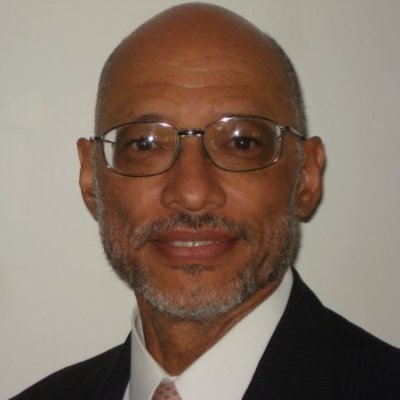 Gary Seagraves
Gary Seagraves Gary started his career as a programmer at Varian Associates after graduating from UCI, and moved into management consulting with Peat, Marwick & Mitchell after graduating from Stanford. He went on from there to executive management positions at First Interstate Bank, Transamerica Life Companies, United California Bank, Countrywide Bank and Bank of America. Gary is currently Vice President, Business Analysis & Planning at AIG Retirement Income Solutions. He lives in Moorpark, California with his two children, Angela and Christopher, and his life partner, Lisa Ingalls.
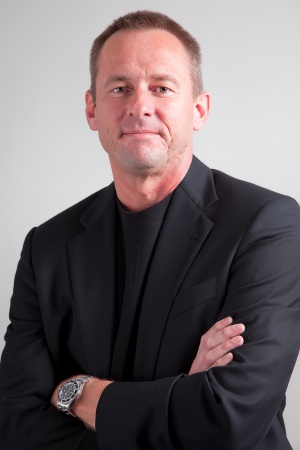 Jon Teichrow
Jon Teichrow Jon has a B.S. in Information and Computer Science from UCI and is a 2011 UCI Lauds & Laurels award recipient.
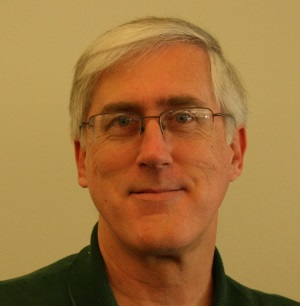 Steve Trimberger
Steve Trimberger 